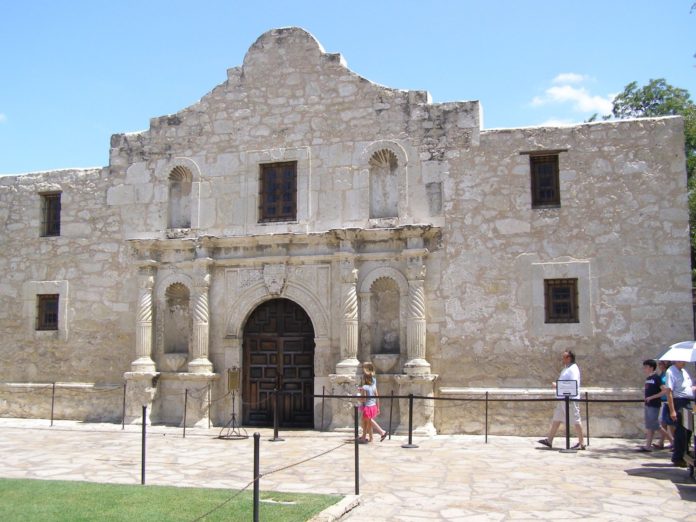Every year, millions of travelers come to Texas for both business and leisure purposes. Texas benefits greatly from travel spending from residents of the state as well as travelers from other states or countries.
In recent years, the Texas travel industry has outperformed the U.S. Since 2009, real travel spending in Texas has grown by 3.5 percent per year, outpacing a 2.9 percent per year rate of growth for the U.S. as a whole. Similarly, employment generated by the travel industry has grown by 3.9 percent per year since 2010 in Texas, compared to only 2.7 percent for the U.S.
According to the Office of the Governor, Economic Development and Tourism, in 2015, Texas received an estimated 255 million visitors, an increase of 4 percent over the previous year. Approximately 72 percent of those visitors traveled for leisure purposes, while 28 percent traveled for business. The state received approximately $69 billion of direct travel spending in 2015, which supported 653,000 jobs directly and 1.1 million jobs both directly and indirectly. Overall, one out of every 10 jobs in Texas is supported by travel spending. Travel to Texas also generated $6.2 billion in state and local revenues, and for every dollar spent on tourism advertising, the state of Texas earned $7.36 in tax revenue.
A common measure of travel/tourist activity is the number of person-stays, which measures the number of non-unique individuals that visited to a certain location. Person-days are similar, but they also take into account the number of days an individual stayed at a certain location. In 2014, Texas had an estimated 243.2 million person-stays and 517.7 million person-days. This means that 243.2 million people traveled to or within Texas and stayed for a total of 517.7 million days over the year. These numbers are an increase of 4.2 percent and 3.6 percent, respectively, from 2013.
People visit Texas for numerous reasons. A little over 12 percent of the stays (the number of parties that arrived at a destination) were for business purposes, while the primary reason for leisure travel was family or life events (37.9 percent of stays), including visiting friends and relatives and celebrating holidays or special events such as birthdays or anniversaries. Other common reasons were cultural activities such as visiting historic sites and other sightseeing (23.8 percent of stays) and libation and culinary activities like traveling to visit a specific restaurant or winery (22.1 percent of stays).
Approximately 82 percent of person-days in 2014 came from individuals traveling by car, with another 16 percent from those traveling by airplane. Texas had the third-highest share of domestic air travel days that year, 70 percent of which were traveling for leisure purposes. About 62 percent of the travel person-days in 2014 came from residents of Texas traveling within the state, with the remaining 38 percent from visitors from other states as well as international origins.
International visitors are particularly good for the travel industry because they tend to stay longer and spend more money. Texas airports had about 9.7 million international arrivals in 2014, and international travel spending totaled $6.8 billion. While international visitors also have a tendency to visit multiple locations, 77 percent of overseas visitors arriving in Texas indicated that Texas was their main destination. International travelers most typically came from Mexico, Canada, the United Kingdom, Germany, Brazil, Australia, Japan, and China. As overall international travel to the U.S. is projected to rise by 20 percent through 2020, Texas can only expect to see an increase in international arrivals and travel spending.
Texas’ major MSAs saw the most travel person-days in 2014, with the top five destinations accounting for over 60 percent of total Texas travel. The Houston-The Woodlands-Sugar Land MSA topped the rankings with nearly 91.6 million person-days (17.8 percent of total Texas travel). The Dallas-Plano-Irving area was second, with 83.7 million person-days (16.5 percent), with San Antonio (72.4 million person-days or 13.8 percent), Austin-Round Rock (45.6 million person-days- or, 8.9 percent), and Fort Worth-Arlington (28.6 million person-days or 5.5 percent) rounding out the top five. Interestingly, although the Houston area has a similar ratio of leisure to business travel as the rest of the state, San Antonio has relatively more visitors for leisure activities (nearly 81 percent), while Dallas-Plano-Irving, Austin-Round Rock, and Fort Worth-Arlington experience relatively more business travel (32 percent or more come for business purposes).
Whatever draws people to Texas, travel spending directly and indirectly benefits communities and companies across the state. Tourism and business travel are important sources of economic stimulus, and visitors promote economic growth across our state.
___________________________________________________________________
M. Ray Perryman is president and CEO of The Perryman Group (www.perrymangroup.com). He also serves as Institute Distinguished Professor of Economic Theory and Method at the International Institute for Advanced Studies.






